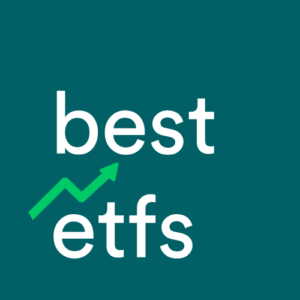A question many investors ask themselves is, how much are National Australia Bank Ltd (ASX:NAB) shares really worth?
This is one of the most common questions senior investment analysts get asked by Australian investors, especially those seeking dividend income. It’s not exclusive to National Australia Bank Ltd, of course.
Westpac Banking Corp (ASX:WBC) and ANZ Banking Group (ASX:ANZ) are also very popular stocks on the ASX.
Before we offer two valuation models you might use to answer the valuation question yourself, let’s consider why investors like bank shares in the first place.
Alongside the tech and industrial sectors, the financials/banking industry is a favourite for Australian investors. The largest banks, including Commonwealth Bank of Australia and National Australia Bank operate in an ‘oligopoly’. And while large international banks, such as HSBC, have tried to encroach on our ‘Big Four’, foreign competitors’ success has been very limited.
Reversing the PE ratio for valuations
The PE ratio, which is short for price-to-earnings, is the simplest and most popular valuation ratio. It compares yearly profit (or ‘earnings’) to the current share price. Unfortunately, it’s the perfect tool for bank shares, so it’s good to use more than just PE ratios for your analysis.
That said, it can be helpful to compare PE ratios across shares from the same sector (banking) and determine what is reasonable — and what isn’t.
Using NAB’s share price today, together with the earnings per share data from its 2020 financial year, we can calculate the company’s PE ratio to be 32.3x. That compares to the banking sector average PE of 24x.
Reversing the logic here, we can take the profits per share (EPS) ($0.805) and multiply it by the ‘mean average’ valuation for NAB. This results in a ‘sector-adjusted’ share valuation of $19.40.
Wall Street’s oldest valuation tool: the DDM
A dividend discount model or DDM, for short, is a more interesting and robust way of valuing companies in the banking sector.
DDM valuation modeling is one of the oldest methods used on Wall Street to value companies, and it’s still used here in Australia by private and professional investors. A DDM model takes the most recent full year dividends (e.g. from last 12 months or LTM), or forecast dividends, for next year and then assumes the dividends grow at a consistent rate for a forecast period (e.g. 5 years or forever).
For simplicity, let’s assume last year’s dividend payments are consistent. Important warning: last year’s dividends are not always a good input to a DDM because dividends are not guaranteed since things can change quickly inside a business. So far in 2020, Australia’s Big Banks have been cutting or deferring their dividends.
To make this easy to understand, using our DDM we will assume the dividend payment grows at a consistent rate in perpetuity (i.e. forever) at a yearly rate between 2% and 3%.
Next, we have to pick a yearly ‘risk’ rate to discount the dividend payments back into today’s dollars. The higher the ‘risk’ rate, the lower the share price valuation.
We’ve used an average rate for dividend growth and a risk rate between 6% and 11%.
This simple DDM valuation of NAB shares is $11.44. However, using an ‘adjusted’ dividend payment of $1.12 per share, the valuation goes to $20.08. The valuation compares to National Australia Bank Ltd’s share price of $26.00.
Summary thoughts
These two share valuation models are just the starting point of the research and valuation process. Please remember that. Banks are very complex companies and if the GFC of 2008/2009 taught investors anything, it’s that even the ‘best’ banks can go out of business and take shareholders down with them.
If you are were looking at National Australia Bank Ltd shares and considering an investment, take your time to learn more about the bank’s growth strategy. For example, is it pursuing more lending (i.e. interest income) or more non-interest income (fees from financial advice, investment management, etc.)? Then, take a close look at economic indicators such as unemployment, house prices and consumer sentiment. Finally, it’s always important to make an assessment of the management team.



